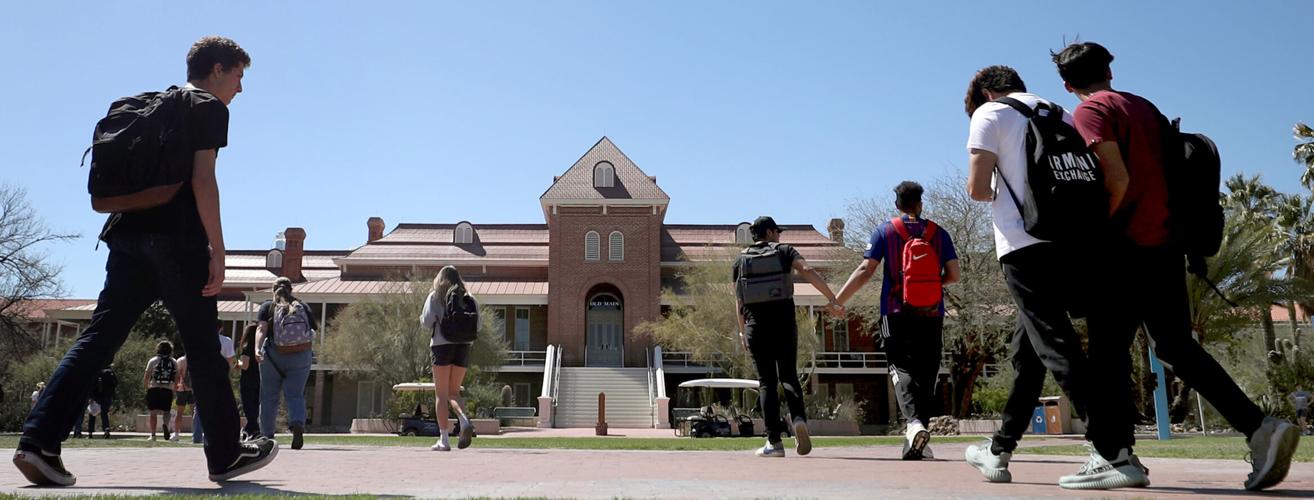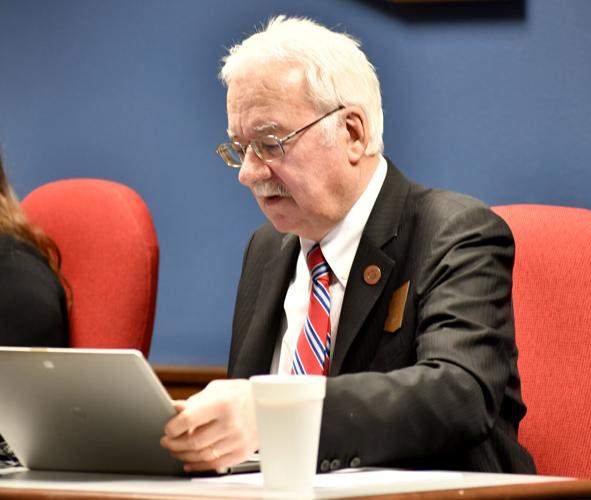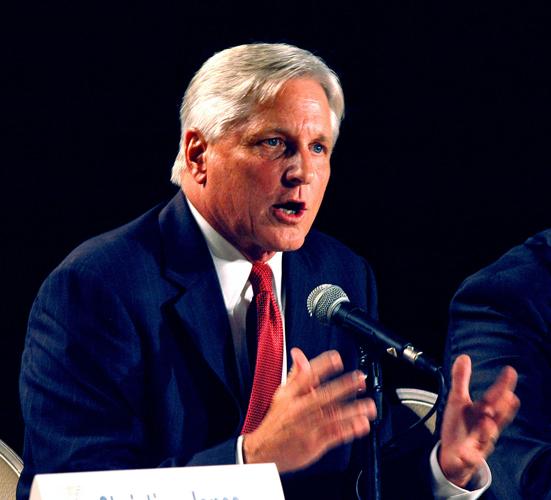A bid by the Arizona Board of Regents for another $732 million to finance universities is rekindling a decades-old fight about the financial responsibility of state taxpayers versus how much of the cost should be borne by students.
In their new request, the regents say the money is necessary to maintain programs in the face of prior state funding cuts.
They want it to come from taxpayers versus students — a 75% increase from current state funding.
The chairman of the Senate Appropriations Committee said that’s not going to happen. Sen. John Kavanagh said the estimates of state tax collections for the coming fiscal year suggest that no agencies — including the universities — are going to get additional funding.
But regardless of the state’s overall financial situation, Kavanagh, a Fountain Hills Republican who has been in the Legislature since 2007, said he thinks the university system is getting what it needs from state taxpayers. For a large share of Arizonans, he said, higher education remains quite affordable — and free for many.
That affordability, however, is not due to state aid, which has been decreasing for decades.
Instead, the three universities, facing years of cuts in public dollars, are making up the difference by recruiting more out-of-state students, who pay three times as much as Arizona residents. Non-Arizonans now make up 51% of those enrolled, double the percentage of two decades ago.
Regent Fred DuVal said the $732 million increase is necessary because of cuts universities already had to make in critical programs such as the Arizona Teachers Academy. The academy covers tuition and mandatory fees for each year that a student commits to teaching in an Arizona school.
Also cut this year, DuVal said, was funding for the Arizona Promise Program, a guaranteed scholarship program for eligible Arizona residents to ensure all tuition and fees are covered at the state’s public universities.

Sen. John Kavanagh

Regent Fred DuVal
‘Lack of public investment’
Some of the lost funding can be attributed to the fact that pretty much all state agencies had to take a 3.5% year-over-year funding cut to balance the state budget.
But for universities, the actual dollar cut was bigger than 3.5%: State funding went from $1.1 billion two years ago, to a bit more than $1 billion last school year, to the current $970 million figure.
Arizona State University President Michael Crow says his school lost $24 million this fiscal year as what he calls a direct result of “recent budget cuts passed by the state Legislature and signed by the governor.’’ He is not mincing words.
Crow said last week the cuts are leading to new spending reductions and a $350 surcharge next spring for on-campus students. Also, ASU will close its Lake Havasu Center next summer.
“These necessary actions reflect the continuing lack of public investment from state government for higher education in Arizona,’’ Crow said in a written statement. “ASU simply cannot be asked to fund the expansion of higher education across the state without state investment as a part of the financial structure to do so.’’
Gov. Katie Hobbs, who signed the state budget, does not dispute the numbers.
“Facing a $1.8 billion deficit that was largely inherited, I brought together a bipartisan coalition to pass a balanced budget, protect Arizonans from egregious cuts, and still make some new investments,’’ she told Capitol Media Services. But that also meant using the funds she had for her other priorities including housing and helping the homeless.
All that relates directly to how much of the financial burden of running a state university system should be borne by students versus taxpayers.
Consider the trend.
This year, the state general fund put in $970 million, while students paid $3.4 billion in tuition and fees.
By contrast, in the 2007-2008 school year, the general fund paid for 33% of the operating budgets of the state universities. Those budgets include not just tuition and general funds but federal grants and other dollars.
This year, the state’s share is down to 12%.
On the other side of the equation, tuition and fees made up 23% of university operating budgets in 2007-2008. Now it’s up to 43%.
The balance comes from federal money — much of it in dedicated research grants — that currently makes up more than 40% of total funding.
Shift in the burden
There’s another way of looking at it.
According to the regents, state aid on a per-student basis during the 2007-08 school year was $9,439. For the current year, that figure in actual dollars is estimated to be $4,174. And that’s not taking into account how inflation has affected the value of those dollars.
The trend — and, in particular, the shift in the burden from taxpayers to students — raises the question of at what point, with students absorbing more and more of the costs, it no longer makes sense to have a state vs. a private university system.

Students at the University of Arizona
“That’s part of why I’m working to build governing majorities in the Legislature, governing majorities that support higher education,’’ Hobbs said. The governor is raising money now — in a year when she is not up for reelection — to help gain seats for fellow Democrats and end Republican control of the Legislature.
But Hobbs balked at whether that definitely means more higher education funding if Democrats take over.
“I cannot guarantee that,’’ she said. “I can guarantee that we will work to fund them equitably.’’
As to relief for students, their only hope is that the Legislature and the governor step in.
Kavanagh acknowledged that tuition for Arizona students has increased.
In the 2010-2011 school year, for example, tuition and mandatory fees at the University of Arizona were $8,237. The current figure is $13,900.
But Kavanagh said that is misleading.
“Look at the walk-out-the-door price,’’ he said. The figures he has seen over the years in his role of having purview over university budgets, he said, show that close to half of all in-state students pay nothing in tuition after various scholarships and grants are factored in.
The actual figures across the university system, according to the Board of Regents, are 42.8% for first-time, full-time students and 37.8% for all full-time undergrads. At the University of Arizona, the figures are 40.5% for first-time students and 35.5% for all undergrads. But the point remains.
“The next one-third might have paid 25% of the tuition,’’ Kavanagh said. “The only people who are paying full freight are people from wealthy families. And they can afford it.’’
Arizona’s workforce needs cited
DuVal does not dispute that most in-state students aren’t paying the sticker price. But he said that can happen in an age of decreasing state support only because the universities are making up the difference by actively recruiting students from other states and countries.
That also makes up for the reduced state funding. But he’s not sure that’s been a good move.
“Decades ago, we capped those (out-of-state) students at 30%,’’ DuVal said. It’s now about half.
“Conversely, Arizona degree attainment is flat,’’ he said. “But educating Arizona students is our principal assignment.’’
And the students from other states or other countries, said DuVal, return home after graduation.
“Arizona employers are saying their Number One issue is workforce,’’ he said. “And they see the universities as essential to fulfilling that need.’’
But Kavanagh said he sees the number of students from elsewhere as a good thing. He said it hasn’t come at the expense of quality.
Consider Arizona State University. “When I came here in 1993, the reputation was a party school,’’ Kavanagh said. “The reputation now is top-tier, four-year public research institution. I applaud the universities, especially (Michael) Crow, for creating a good brand that out-of-state people are willing to pay a premium price for.”
Nor does he see out-of-state students pushing out Arizona residents.
ASU, for example, saw its undergraduate headcount go from 58,404 in 2012 to 112,171 in 2023, while the ratio of out-of-state students has remained essentially the same.
The growth at UA was not as remarkable, going from 30,665 to 38,751 during the same period.

Students at the University of Arizona






